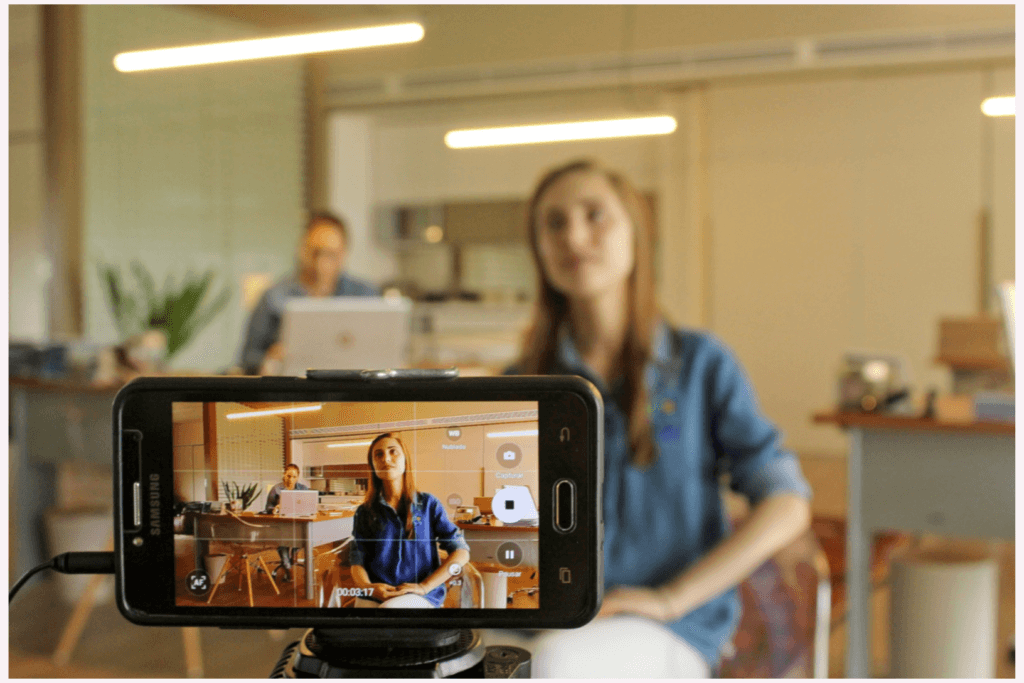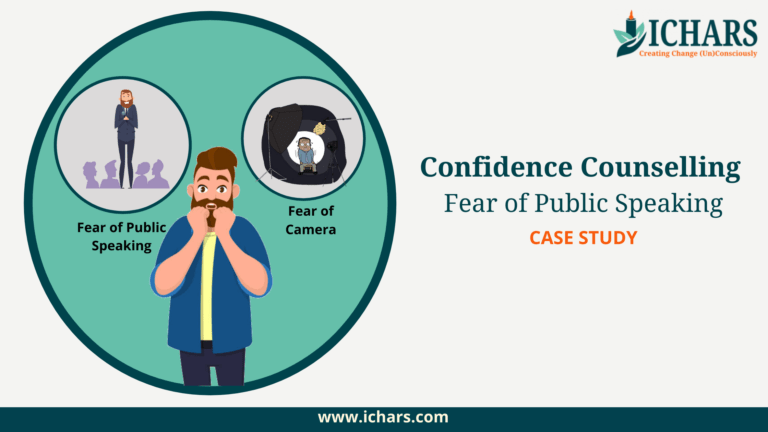Recently, I received a call from Shyam (name changed) who had a Fear of public speaking and facing the camera. He was wondering whether confidence coaching/counselling can help him. After having an initial conversation over the phone, we planned for a consultation session.
For details about the techniques mentioned in the case study, check the references at the end of the case study
Confidence Counselling – Step-by-Step Guide
Shyam : So Nitin, I have completed my masters in psychology a couple of years back. I was looking forward to starting my practice. During the last two years, I have been interning with a psychotherapy institute. During my internship along with observing the process followed by the practitioners during the counseling sessions, I also learnt how this institute focused on videos and awareness talks as the primary route for creating awareness and for generating clients.
Nitin, you know I recognized the importance of the same and wanted to use the same strategy for creating awareness about me and my practice. The problem that I’m facing, and the reason why I am here is that I am afraid of facing cameras and of speaking in front of a large audience. This fear was coming in the way of me being able to record videos and take awareness talks.

As always in the first consultation session, after hearing Shyam’s challenges, I began by psycho-educating Shyam about the core concepts behind the process I follow. I suggested Cognitive Hypnotic Psychotherapy (which is an eclectic approach to Psychotherapy) for working through confidence counselling.
Then I walked her through the pre-coaching process.
After helping her understand the therapy process, I added that in her case, once we have defined the current problem and outcome clearly, I will help her –
In the first session, after hearing Shyam’s Challenge, I began by psycho-educating Shyam, about the process and the possible implications of counseling.
I informed Shyam that the approach we follow for confidence counselling will include:
- Defining the Existing problem clearly
- Defining the expected outcome from the sessions clearly
- Describing in detail how he sees his future with respect to his private practice
- Identifying and restructuring specific dysfunctional thoughts that were leading to the fear.
- Using Hypnotic / Guided imagination techniques for associating confidence with facing cameras and public speaking.
- Recording at least 3 videos and conducting at least one awareness talk before the end of the counseling sessions
Session 1 : Defining Challange and Desired Outcome
The first session focused on helping Shyam define his current situation, desired outcome, and expected future.
With the help of the SOFT SEA Coaching® framework*1, I started by asking Shyam to summarize the challenges he wanted to overcome through confidence counselling in his own words.
I asked Shyam to summarize the current challenge he was facing and wanted to overcome via therapy in her own words.
Shyam said he feels anxious in front of a camera and on stage
I than asked Shyam to reframe his problem statement using the following format:
I feel ……………………. about ………………………… when ……………………………
Shyam : I feel scared and anxious about people not liking what I say when I think of recording a video or announcing an awareness session.
I asked Shyam to read the statement a couple of times and tell me what was the desired outcome that he wanted to achieve at the end of these sessions in the format
I wish ……………………….
Shyam: I wish to be able to confidently face cameras, record videos and also conduct awareness talks in front of a large audience.
I asked shyam to describe how the videos and awareness talks will help him in establishing his own private practice. I asked him to describe in detail how he will see his practice growing and what will be observable indicators for him moving in the right direction.
Shyam made a list of it.
For home assignment, I asked him to identify the specific thoughts he has in mind when he thinks of recording a video or announcing an awareness talk.
Session 2 : Working with Behaviours
We began session 2 in the next week by asking him about the week and any changes that he noticed in his behaviours, thoughts, or emotions. Shyam mentioned that while he was writing about the future, he actually started believing that it was possible to achieve that, which seemed almost impossible before the sessions.
While I was going through his home assignment,
Shyam had mentioned that he gets this thought that “I will not be able to do it, people will not like it”
So I asked Shyam What would he like to replace this with?
Shyam said “Maybe people will like maybe they will not like but I will learn from this experience and improve”
I asked shyam to create a new statement using the format:
When trigger, then I realize new thought*2
Shyam: “When I am thinking of recording a video or announcing an awareness talk then I realize Maybe people will like maybe they will not like but I will learn from this experience and improve”
I asked shyam to keep repeating this statement for the entire week as his home assignment.
We further made an elaborative task list wherein we chunked down each and every task into smaller bits. I also asked Shyam to tell me what would be the possible hindrances while working on those tasks.
For his home assignment, I asked him to continue with the list.
Session 3 : Working with Behaviours
In the third session, Shyam reported that he had started feeling better in the past week.
While I was going through the home assignment, Shyam was very well able to chunk down the tasks. The major emotion that he wanted to feel was Confidence. I asked him to tell me 1 situation in the past where he felt most confident and 3 situations in the future where he would like to feel confident.
After he listed down the 3 future situations I used a combination of Emotional Anchoring*3 and Future Imagination to associate the feeling of confidence with stage and also camera. I guided Shyam in the imagination to record videos and also conduct awareness programs.
At the end of the session, Shyam informed that he felt more confident about being able to both record the video and conduct an awareness session.
For home assignment, asked Shyam to record at least 3 video in the coming week before the next session and prepare content for the awareness talks.
Session 4 : Closure
In the next session Shyam was very happy to show the three videos he had recorded and informed that he was working on the content for the awareness talk. He discussed the content of the awareness talk and the process for declaring and promoting the same with me.
I also guided Shyam through another Guided Imagination*4 focusing on delivery of awareness talks with confidence.
At the end of the session Shyam felt happy and confident. I and Shyam mutually decided to end the sessions as the objective of the session was achieved.
Additional Observation
Notice how powerful the Eclectic approach to therapy can be and also that therapy cannot just help clients achieve their outcomes but also create additional positive effects that may not have been a part of the discussed outcomes of therapy.
References for techniques used
The concepts and techniques discussed during this case study are based on the topics covered during the Cognitive Hypnotic Coaching® Diploma and the Cognitive Hypnotic Psychotherapy® Diploma Program.

